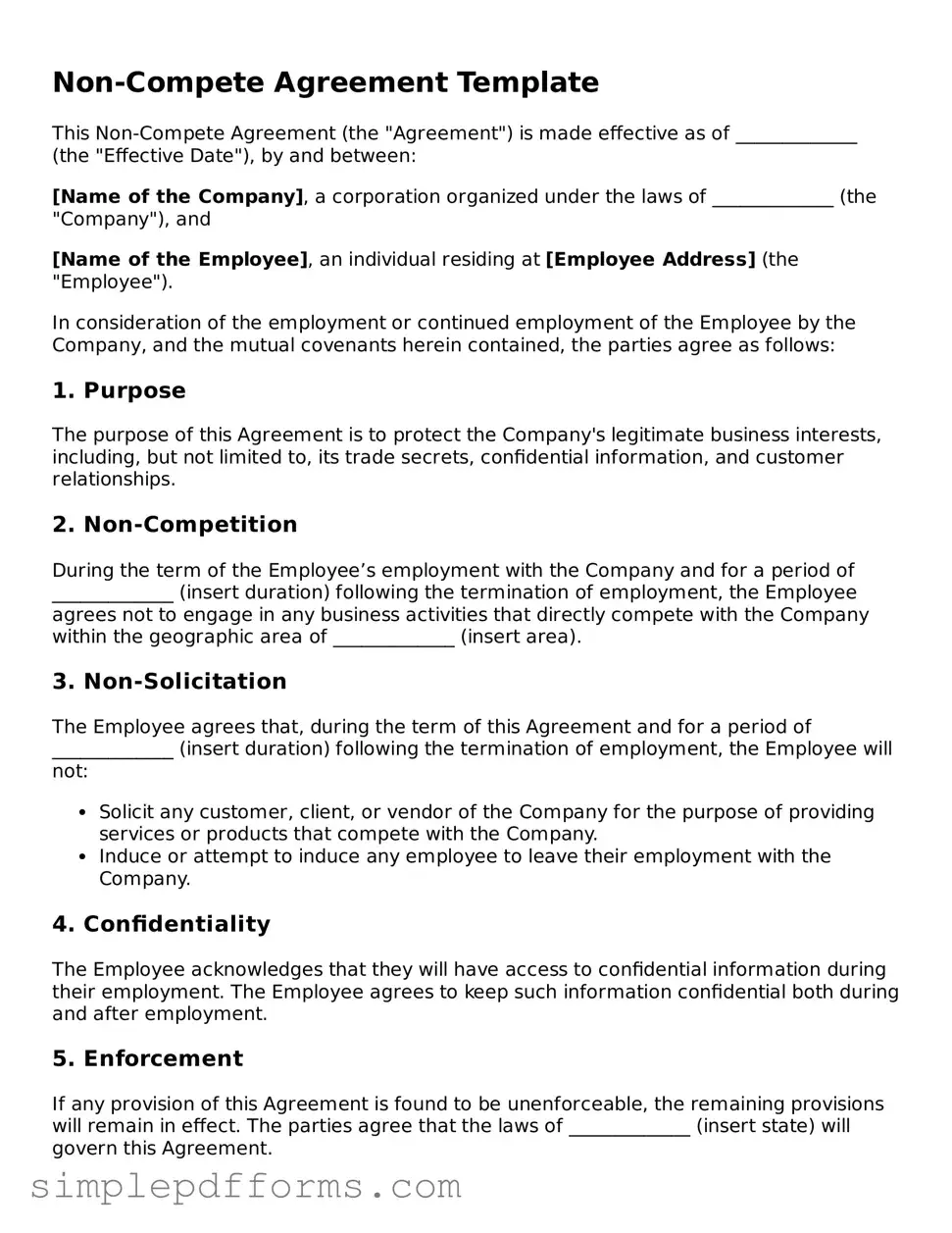Non-Compete Agreement Template
This Non-Compete Agreement (the "Agreement") is made effective as of _____________ (the "Effective Date"), by and between:
[Name of the Company], a corporation organized under the laws of _____________ (the "Company"), and
[Name of the Employee], an individual residing at [Employee Address] (the "Employee").
In consideration of the employment or continued employment of the Employee by the Company, and the mutual covenants herein contained, the parties agree as follows:
1. Purpose
The purpose of this Agreement is to protect the Company's legitimate business interests, including, but not limited to, its trade secrets, confidential information, and customer relationships.
2. Non-Competition
During the term of the Employee’s employment with the Company and for a period of _____________ (insert duration) following the termination of employment, the Employee agrees not to engage in any business activities that directly compete with the Company within the geographic area of _____________ (insert area).
3. Non-Solicitation
The Employee agrees that, during the term of this Agreement and for a period of _____________ (insert duration) following the termination of employment, the Employee will not:
- Solicit any customer, client, or vendor of the Company for the purpose of providing services or products that compete with the Company.
- Induce or attempt to induce any employee to leave their employment with the Company.
4. Confidentiality
The Employee acknowledges that they will have access to confidential information during their employment. The Employee agrees to keep such information confidential both during and after employment.
5. Enforcement
If any provision of this Agreement is found to be unenforceable, the remaining provisions will remain in effect. The parties agree that the laws of _____________ (insert state) will govern this Agreement.
6. Miscellaneous
This Agreement constitutes the entire understanding between the parties and may only be modified in writing signed by both parties. If either party fails to enforce any term of this Agreement, that failure will not constitute a waiver of the right to enforce that term in the future.
IN WITNESS WHEREOF, the parties have executed this Non-Compete Agreement as of the Effective Date.
Date: _____________
__________________________
[Name of the Company]
Date: _____________
__________________________
[Name of the Employee]
